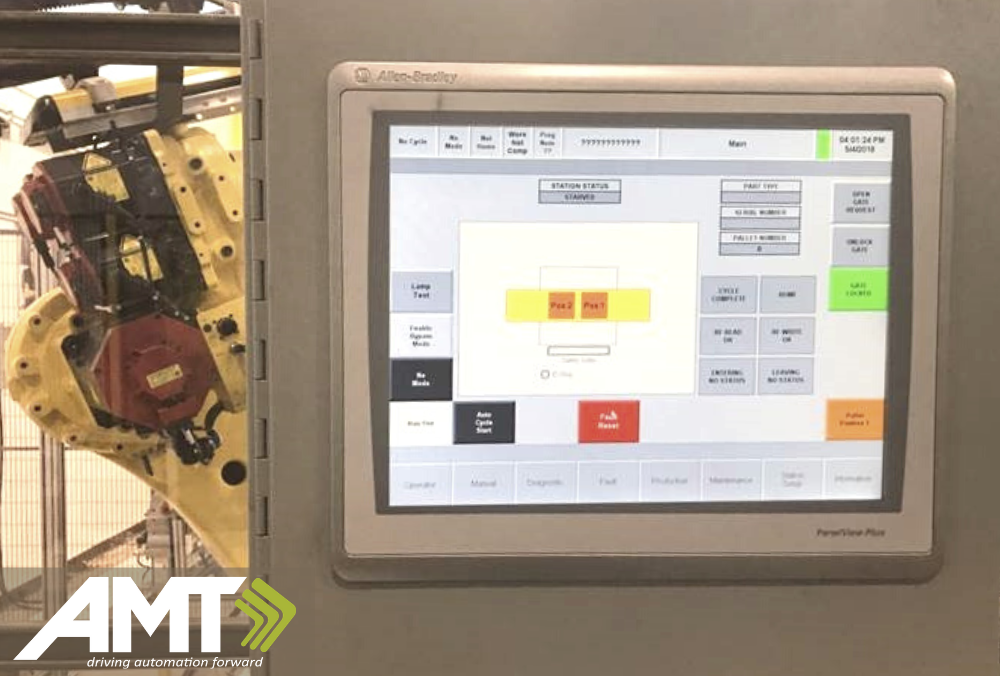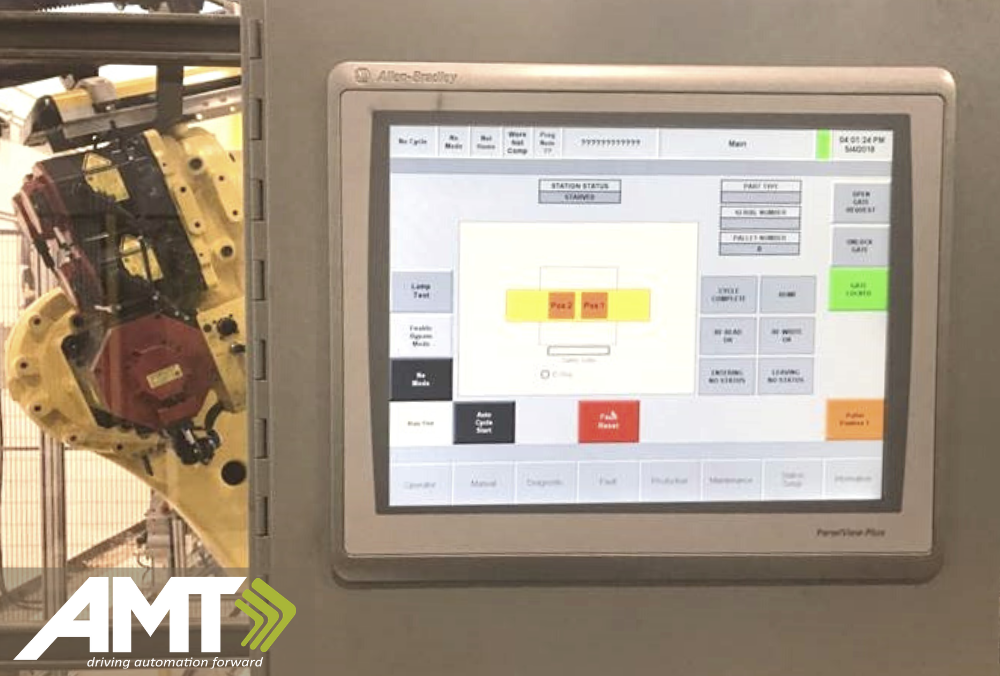PLC Controlled Robots
 PLC controlled robots are not a magic bullet, but can provide cost savings to manufacturers by limiting the specialized support traditionally needed to manage robotic automation.
PLC controlled robots are not a magic bullet, but can provide cost savings to manufacturers by limiting the specialized support traditionally needed to manage robotic automation.
For several years, manufacturers were faced with a dilemma when launching a new robot application into their production environment. Most robot original equipment manufacturers (OEMs) required the operator to be knowledgeable in the core robot language in order to program and maintain the robot for the application in question. Support staff would need to be highly proficient in every manufacturer’s specific language and logic that a facility had in use. In these cases what’s the most prudent course of action to take to implement their new automation solution? Train existing staff? Search out and hire qualified labor? Employ the services of an experienced systems integrator? The expense of finding individuals with multiple skill sets is high but so is the alternative of employing more people in order to cover the range of knowledge required.
- Training internal staff on a new robot core language can add unnecessary cost to a capital project and push back the timeline for implementation.
- For complex systems, supporting multiple different robot languages can turn into a logistical and managerial nightmare.
- Finding qualified labor is difficult, especially in less populated areas where many manufacturing facilities operate.
- Luring talented prospects to remote areas has turned into a dicey proposal in today’s environment.
Perhaps one of the most promising solutions was unveiled with the introduction of products such as FANUC Robotics PLC Motion Interface. With the development of PLC-controlled robots, companies were given the opportunity to manage a robotic automation solution with a single, unified point-of-control between industrial robots and Programmable Logic Controllers (PLCs). Most manufacturing operations already employ engineers familiar with PLC programming and taking advantage of that existing knowledge to onboard and maintain new robot equipment removes the need to reinvent the wheel. Taking advantage of current staff with experience in PLC programming and general robot programming knowledge reduces the need to outsource via new hires or enlisting the service of a third-party systems integrator.
For the end customer of a robotic solution, the most important advantage of PLC robot control is that often only one programming language is needed to support the entire solution. In many of these situations, the manufacturing facility already has a knowledgeable PLC staff, as this is the standard type and language that are used for their production, process equipment, and machinery. They can handle the majority of automation support for the integrated cell through the PLC HMI. Adopting the existing controls system for robots includes the added benefit of simplified troubleshooting and maintenance as well. Turning to an automation environment controlled via PLCs also gives manufacturers the freedom to choose the robot OEMs that best fill their needs. No longer are end users pigeon-holed into buying from a single OEM to avoid the extra hassle of training staff on yet another robot language. Robot automation can be more appropriately selected due to the characteristics and capabilities of specific models.
When considering options, manufacturers should take advantage of the latest technology. Robot controllers have advanced motion, safety capabilities, integrated vision, collision detection, force sensing, and other advanced capabilities. However, in most cases these advanced robot functions are available for programming through the PLC. Additionally, many industrial robot applications are simple material handling operations, such as picking, packing and palletizing. These applications can easily be programmed in the function block style found in the PLC environment. If the application in question is primarily a material handling operation, it may be the most sensible course of action to put the teach pendant down and head to the nearest HMI.
To be clear, PLC controlled robots are not a magic bullet for manufacturers. Switching from robot controllers to PLC logic controlled robots will not offer any better or reduced robot performance. This particular solution is geared more toward assessing the need for a larger technical staff at the end user’s facility. By limiting the need for very specific robot manufacturer experience, a company can be more efficient in its staff management. For example a company may want to retain a certain skill set among their staff but will not need to staff that skill set for all working shift coverage. More advanced needs for special circumstances will still reside amongst the team but is not necessary for the everyday maintenance of the system.
Integrators with experience installing systems fully controlled via PLC logic can assist in upgrading current cells to help cut down on the support costs of a more complex system. Designing new solutions with the PLC and HMI controls architecture to enable the operator’s ability to support and attend to the cell purely through the HMI can prevent the need to ever pick up a robot teach pendant. Eliminating the cost and time associated with training new or existing operators can create a quicker return on investment and make upgrading existing equipment or integrating a new robotic automation solution a less complex and more realistic opportunity.
To determine if your robot application is an ideal candidate for PLC robot control, please contact us.

